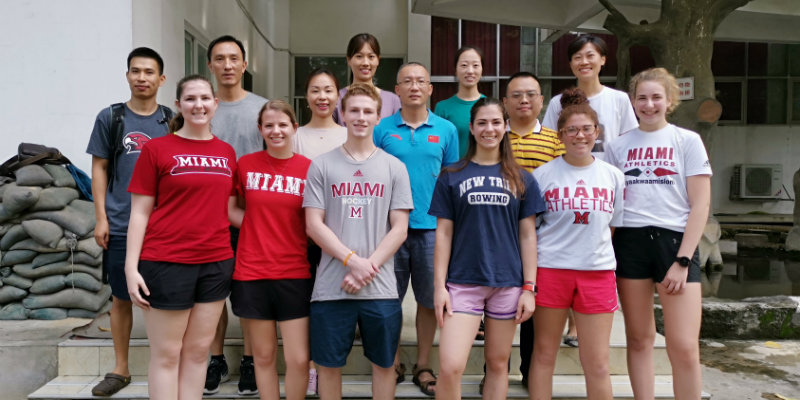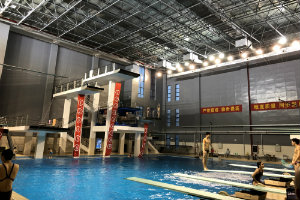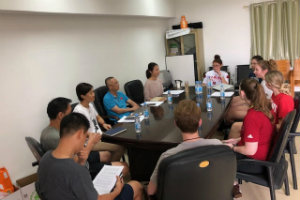Miami Students Swap Cultural Perspectives (and Recipes) with Chinese Olympic Athletes


James M. Loy, Miami University
It began with Pei Lin.
Lin was a Miami student studying kinesiology and health (KNH). She had also become a three-time Mid-American Conference diving champion, which caught the attention of athletic experts back in her home country of China. And prompted them to wonder …
How did Miami help Lin become so successful? And what insight could other Chinese athletes gain from her experiences?
“The Ersha Olympic Center was very impressed by Pei Lin’s accomplishments on the Miami University diving team, and in the classroom,” says Gretchen Matuszak, Miami University director of the didactic program in dietetics. “Ersha asked [KNH] to come set up an internship program for our students in nutrition, athletic training, and strength and conditioning. So they could learn why Miami student athletes are so successful.”

The Ersha Olympic Center is one of the largest sports training facilities for Chinese Olympic athletes. It currently trains over 800 athletes in 13 different sports. In all, hundreds of coaches, researchers, doctors, and teachers are also on hand to help these elite athletes reach the highest levels of performance.
And today, the partnership between Ersha and Miami is now underway.
This summer, six KNH students -- including Grace Cucco, Abbie Klinker, Jackson Polish, Kristin Sondys, Meghan Webber, and Caitlyn Wilson -- completed an intensive 2-month internship in Guangdong, China, where they worked with swimming, diving, gymnastic, and track and field Olympic-level athletes.
“It was about a cultural exchange,” says Cucco, a Miami senior studying dietetics. “They really wanted to see what American athletes were doing with their nutrition, and with their strength and conditioning, and physical therapy. So we shared what we learned in school, and what we know our athletes do.”
Of course, an exchange goes both ways. So for the Miami students, this also meant learning about the differences and similarities between their respective cultures on both practical and scientific levels.

For example, U.S. athletes typically hydrate with Gatorade and salt supplements, while Chinese athletes drink teas and soups.
Students also learned about alternative therapeutic intervention and injury rehabilitation methods such as dry needling and cupping, and about various herbal remedies that rely on ginger instead of traditional Western medicines.
“It helped me understand that what we are learning [in the U.S.] is very true and very applicable, but it is perceived very differently in other parts of the world,” says Klinker, a junior nutrition and dietetics major. “So being able to say, okay, this is what I learned in my class, but it is not the only way that it can be done. It gives more depth to the knowledge that I have learned here.”
However, perhaps the most eye-opening cultural difference -- even more so than the significant language barrier itself -- was the food, which meant being introduced to a variety of exotic fruits, vegetables, unfamiliar animal parts, and cooking methods.
But it not only made for adventurous eating. The local cuisine also presented an interesting and academic challenge for the students, especially the dietetic students, who analyzed the nutritional and performance benefits it held for Chinese athletes.
“They eat a very, very high fat diet,” Cucco says. “But we encourage our athletes to eat high carb and moderate fats. So we told them that, and they were very surprised.”
“I learned that not everything has to work the way we believe it does,” she says.

